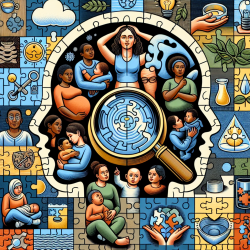Introduction
Supported Decision Making (SDM) has emerged as a vital strategy in empowering individuals with intellectual and psychosocial disabilities, particularly in the context of the United Nations Convention on the Rights of Persons with Disabilities (CRPD). This blog post explores the findings from the research article "Supported Decision Making in South America: Analysis of Three Countries’ Experiences" and how practitioners can leverage these insights to enhance their skills and improve outcomes for children.
Understanding Supported Decision Making
SDM is an approach that allows individuals with disabilities to make decisions about their lives with the support of trusted individuals or networks. Unlike guardianship, which often removes decision-making rights, SDM empowers individuals by providing the necessary support tailored to their unique needs. This approach aligns with Article 12 of the CRPD, which emphasizes the right to legal capacity on an equal basis with others.
Key Findings from South America
The research analyzed SDM projects in Colombia, Peru, and Argentina, highlighting the diverse approaches and outcomes achieved. Key components of these projects included:
- Person-Centered Planning: All projects utilized person-centered planning to tailor support to individual needs, fostering autonomy and self-determination.
- Community Involvement: Engaging community organizations and networks was crucial in providing holistic support and reducing stigma.
- Supporter Training: Training for supporters, including family members, enhanced their ability to provide effective support.
- Monitoring and Evaluation: Regular monitoring and evaluation ensured the effectiveness of SDM practices and identified areas for improvement.
Implications for Practitioners
Practitioners in the field of speech language pathology can draw valuable lessons from these SDM projects to enhance their practice:
- Adopt a Person-Centered Approach: Tailor interventions to the unique needs and preferences of each child, involving them actively in decision-making processes.
- Engage with Families and Communities: Foster strong partnerships with families and community organizations to create a supportive environment for children.
- Invest in Training: Continuously seek training opportunities to improve skills in providing decision-making support.
- Emphasize Monitoring and Evaluation: Implement regular monitoring to assess the effectiveness of interventions and make data-driven adjustments.
Encouraging Further Research
While the projects in South America provide valuable insights, there is a need for further research to explore the long-term impacts of SDM and its applicability in different cultural contexts. Practitioners are encouraged to contribute to this growing body of knowledge by conducting research and sharing their findings.
To read the original research paper, please follow this link: Supported Decision Making in South America: Analysis of Three Countries’ Experiences.










